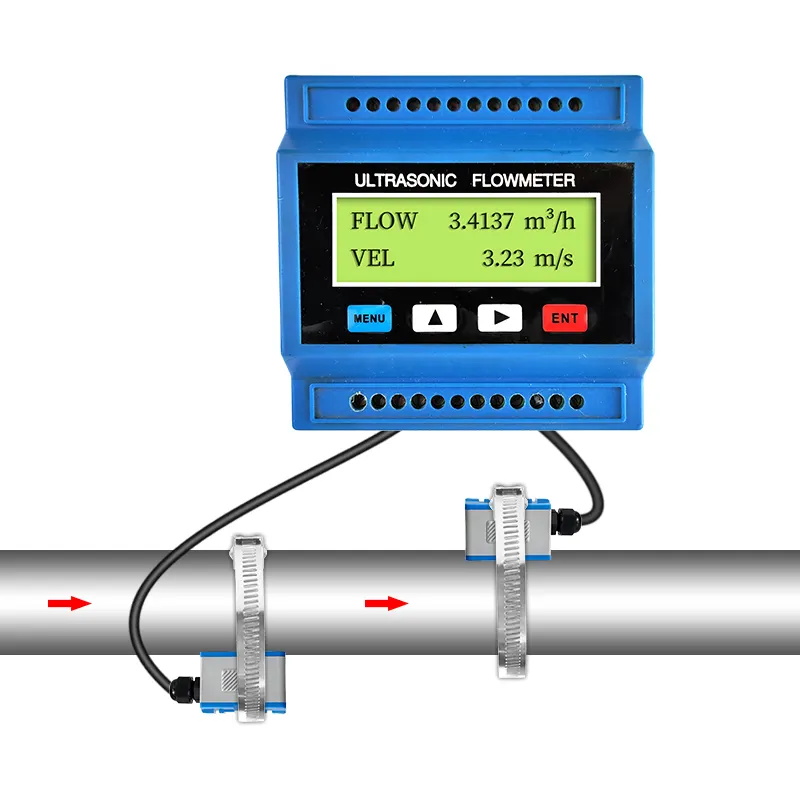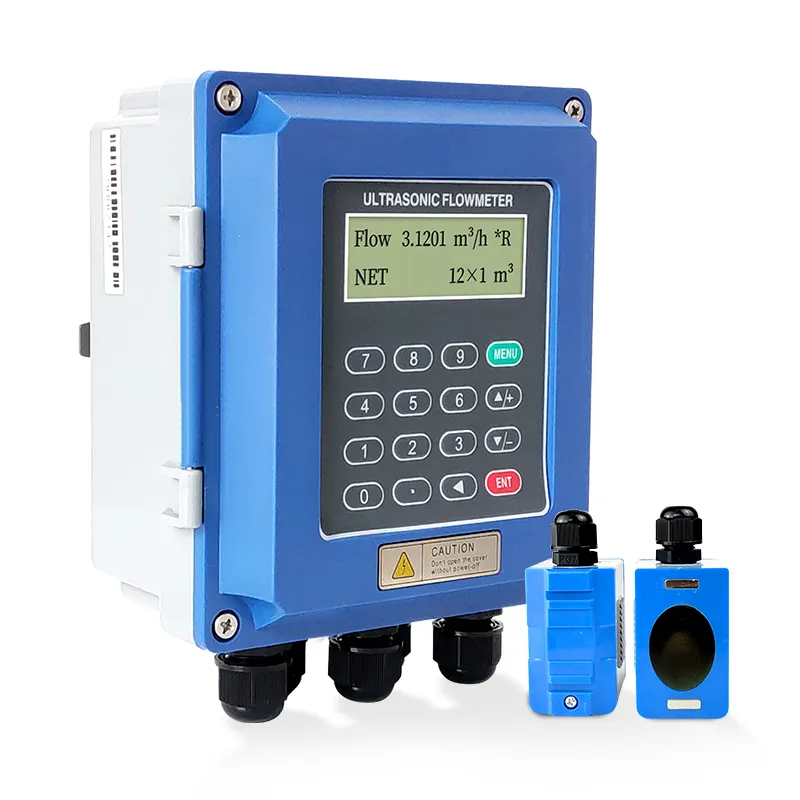Підвищення ефективності роботи газопроводів
Газопроводи є основою енергетичної інфраструктури, забезпечуючи транспортування великих обсягів природного газу між регіонами для промислового, комерційного та побутового використання. У такій складній та критичній системі надзвичайно важливо пітримувати ефективність, точність і безпеку роботи. Лічильники потоку відіграють незамінну роль у досягненні цих цілей, забезпечуючи точне вимірювання та контроль потоку газу по всій мережі.
Підвищення точності вимірювань за допомогою лічильників потоку
Зменшення невизначеностей потоку
Однією з ключових переваг лічильники потоку в газопроводах є їхня здатність мінімізувати невизначеності у вимірюваннях потоку. На відміну від традиційних методів оцінки, сучасні лічильники потоку надають дані у реальному часі, що підвищує прозорість і точність на всіх етапах операцій. Це дозволяє операторам газопроводів краще розуміти характер споживання та оптимізувати графіки поставок відповідно до реального попиту.
Уможливлення моніторингу у режимі реального часу
З впровадженням сучасних цифрових технологій сучасні витратоміри тепер можуть передавати неперервні дані високої роздільної здатності про витік, а також моментальні сповіщення в режимі реального часу. Ця підвищена функціональність дозволяє операторам постійно стежити за системами газопроводів, забезпечуючи швидке виявлення навіть незначних відхилень у швидкості потоку, тиску або температурі. Шляхом надання попереджувальних сигналів, ці розумні витратоміри допомагають запобігти перетворенню малих відхилень на серйозні несправності, які можуть порушити безпеку, знизити ефективність або призвести до витратного простою. Моніторинг у режимі реального часу є особливо важливим у мережах довгострокових газових трубопроводів, де раннє виявлення незначних нерівностей — таких як поступове зниження тиску або нестабільність потоку — може бути вирішальним. Такі коливання часто сигналізують про початок критичних проблем, таких як витік, несправність обладнання або напруження трубопроводу, що дозволяє технічним фахівцям втрутитися проактивно, перш ніж проблема загостриться.
Система підтримки оптимізації та контролю
Сприяння автоматизації
Висока точність та надійність витратомірів роблять їх надзвичайно придатними для інтеграції в складні автоматизовані системи керування трубопроводами. Ці витратоміри постійно передають точні дані про витрати в реальному часі, які можуть безпосередньо передаватися в сучасні алгоритми керування та наглядового програмного забезпечення. Такий безперервний обмін даними дозволяє автоматизувати ключові операції трубопроводу, такі як динамічне регулювання положення клапанів та контроль виходу компресорів залежно від поточних умов потоку. У результаті система може підтримувати оптимальні швидкості потоку й стабілізувати рівні тиску по всій трубопровідній інфраструктурі без необхідності постійного ручного втручання. Такий рівень автоматизації не лише підвищує точність і узгодженість операцій, але й значно зменшує споживання енергії, забезпечуючи роботу такого обладнання, як компресори та насоси, лише за реальною потребою. З плином часу це сприяє підвищенню загальної ефективності системи, зменшенню експлуатаційних витрат і поліпшенню загальної продуктивності газотранспортної мережі.
Забезпечення збалансованого розподілу
Витратоміри відіграють ключову роль у підтримці збалансованого та ефективного розподілу газу по складних трубопровідних мережах, які часто охоплюють великі території та обслуговують різноманітні зони з попитом. Точно вимірюючи швидкість потоку в ключових місцях, точках з'єднання та кінцевих пунктах, витратоміри забезпечують дані, необхідні для оцінки обсягу газу, що рухається через кожен сегмент системи. Ця детальна видимість дозволяє операторам більш справедливо розподіляти газ, забезпечуючи відповідність поставок як регіональним показникам споживання, так і фізичним можливостям трубопровідної інфраструктури. Такий збалансований розподіл є не тільки важливим для ефективної роботи системи, але й для збереження цілісності мережі. Він значно зменшує ризик надмірного тиску в зонах з високим попитом або вузьких місцях, що може призвести до небезпеки або перевантаження обладнання. У той же час це гарантує стабільне та безперервне постачання газу споживачам в інших регіонах, підвищуючи надійність системи та її здатність реагувати на змінні енергетичні потреби.
Покращення безпеки та дотримання нормативних вимог
Виявлення витоків на ранніх стадіях
Виявлення витоків газу є пріоритетним завданням у управлінні трубопроводами через серйозні ризики для безпеки та навколишнього середовища. Витратоміри відіграють ключову роль у виявленні витоків, визначаючи невідповідності між вимірюваннями витрат на вході та виході. Раннє виявлення витоків мінімізує ризик для персоналу, зменшує втрати продукту та обмежує екологічний вплив викидів газу.
Відповідність галузевим стандартам
Використання витратомірів допомагає операторам газопроводів дотримуватися суворих галузевих стандартів та регуляторних вимог. Точне вимірювання витрат є важливим для цілей розрахунків, екологічного звітування та аудиту безпеки. Дотримання цих стандартів також захищає компанії від правових санкцій та можливих штрафів.
Посилення процесів прийняття рішень на основі даних
Аналіз історичних даних
Лічильники витрати не лише забезпечують дані в режимі реального часу, але й зберігають історичні дані про витрату, які є надзвичайно корисними для аналізу тенденцій та оцінки продуктивності. Вивчаючи історичні дані, оператори можуть виявляти повторювані проблеми, прогнозувати майбутні потреби та ефективніше планувати графіки технічного обслуговування.
Інтеграція з системами SCADA
Багато сучасних лічильників витрати сумісні з системами SCADA (Supervisory Control and Data Acquisition), що дозволяє безперешкодно інтегрувати їх у наявну інфраструктуру. Ця сумісність забезпечує централізоване збирання, візуалізацію та аналіз даних про витрату в режимі реального часу по всій мережі трубопроводів, що сприяє кращому та швидшому прийняттю рішень.

Пристосування до нових технологій
Сумісність з інтелектуальною інфраструктурою
Все більше лічильників витрат проектуються таким чином, щоб вони відповідали ініціативам «розумної» інфраструктури. Завдяки можливості взаємодії з платформами Інтернету речей та інструментами хмарного моніторингу вони стають важливими компонентами енергетичних систем нового покоління. Ця адаптивність забезпечує масштабованість та готовність газопроводів до майбутнього.
Уможливлення передбачувальної технічної обслуговування
Прогностичне технічне обслуговування значною мірою покладається на дані, отримані з лічильників витрат. Аналізуючи зміни витрат і аномалій протягом часу, оператори можуть виявляти ознаки зношення обладнання або деградації трубопроводів ще до виникнення відмов. Такий проактивний підхід зменшує час простою та витрати на технічне обслуговування, покращуючи загальну надійність.
Поширені запитання
Які типи лічильників витрат є найбільш придатними для газопроводів?
Залежно від конкретних потреб газопроводу можна використовувати різні типи лічильників витрат. Поширені варіанти включають ультразвукові, турбінні та лічильники різницевого тиску, кожен з яких має унікальні переваги, що залежать від умов потоку, діаметра труби та бюджету.
Як лічильники витрати сприяють безпеці трубопроводів?
Лічильники витрати допомагають виявити аномалії у швидкості потоку, які можуть свідчити про витікання або падіння тиску. Ця здатність до раннього попередження забезпечує швидку реакцію та мінімізацію наслідків, підвищуючи безпеку трубопровідної системи.
Чи можна інтегрувати лічильники витрати з існуючою трубопровідною інфраструктурою?
Так, більшість сучасних лічильників витрати створені таким чином, щоб їх можна було легко інтегрувати з існуючою інфраструктурою. Вони можуть взаємодіяти з системами SCADA та іншими цифровими платформами для забезпечення централізованого керування та моніторингу.
Які довготривалі переваги використання лічильників витрати в газових трубопроводах?
Довготривалі переваги включають підвищену точність вимірювань, поліпшену безпеку, оптимізацію використання енергії, зниження витрат на обслуговування та краще дотримання регуляторних стандартів. Ці переваги призводять до кращої експлуатаційної ефективності та економії коштів з часом.
Зміст
- Підвищення ефективності роботи газопроводів
- Підвищення точності вимірювань за допомогою лічильників потоку
- Система підтримки оптимізації та контролю
- Покращення безпеки та дотримання нормативних вимог
- Посилення процесів прийняття рішень на основі даних
- Пристосування до нових технологій
- Поширені запитання


